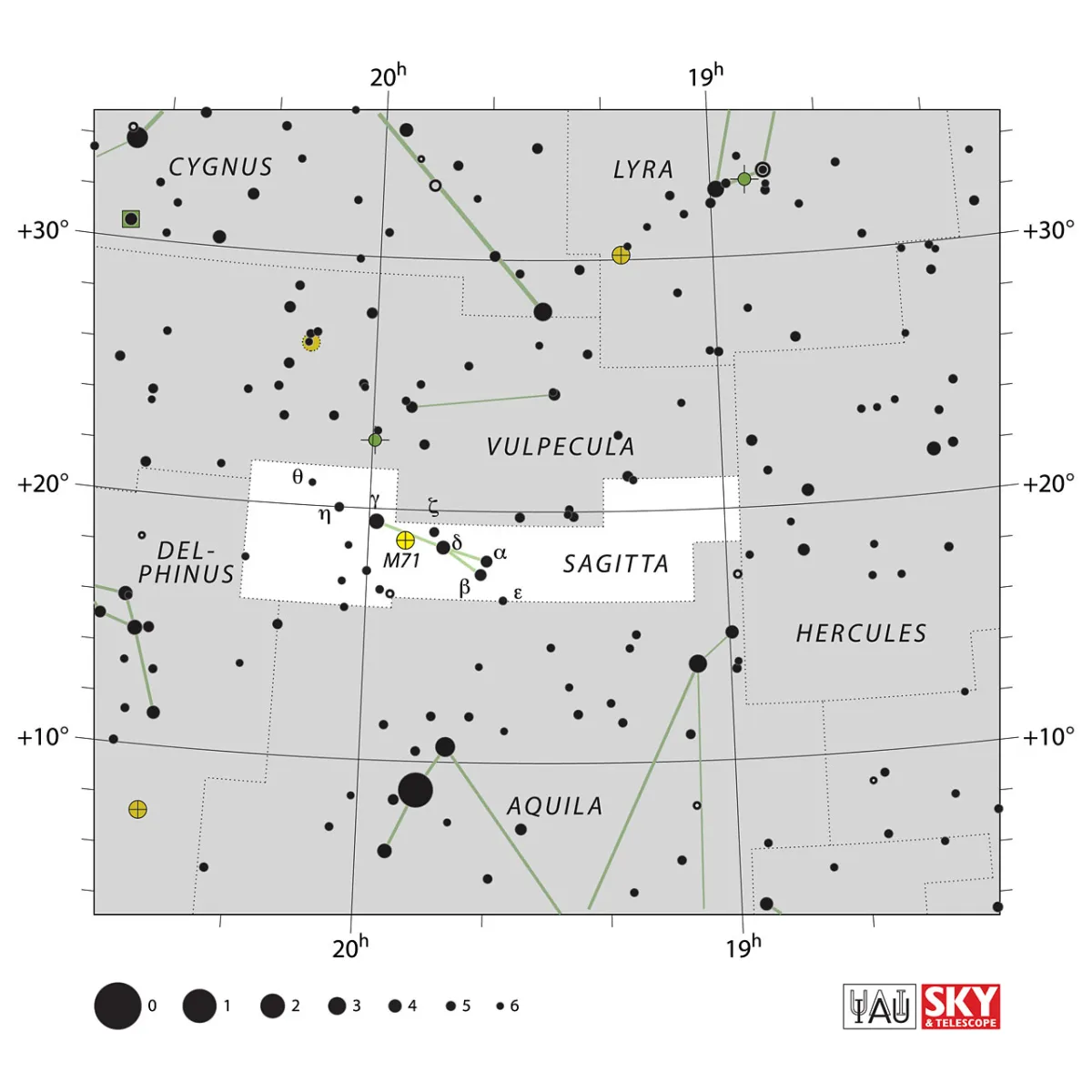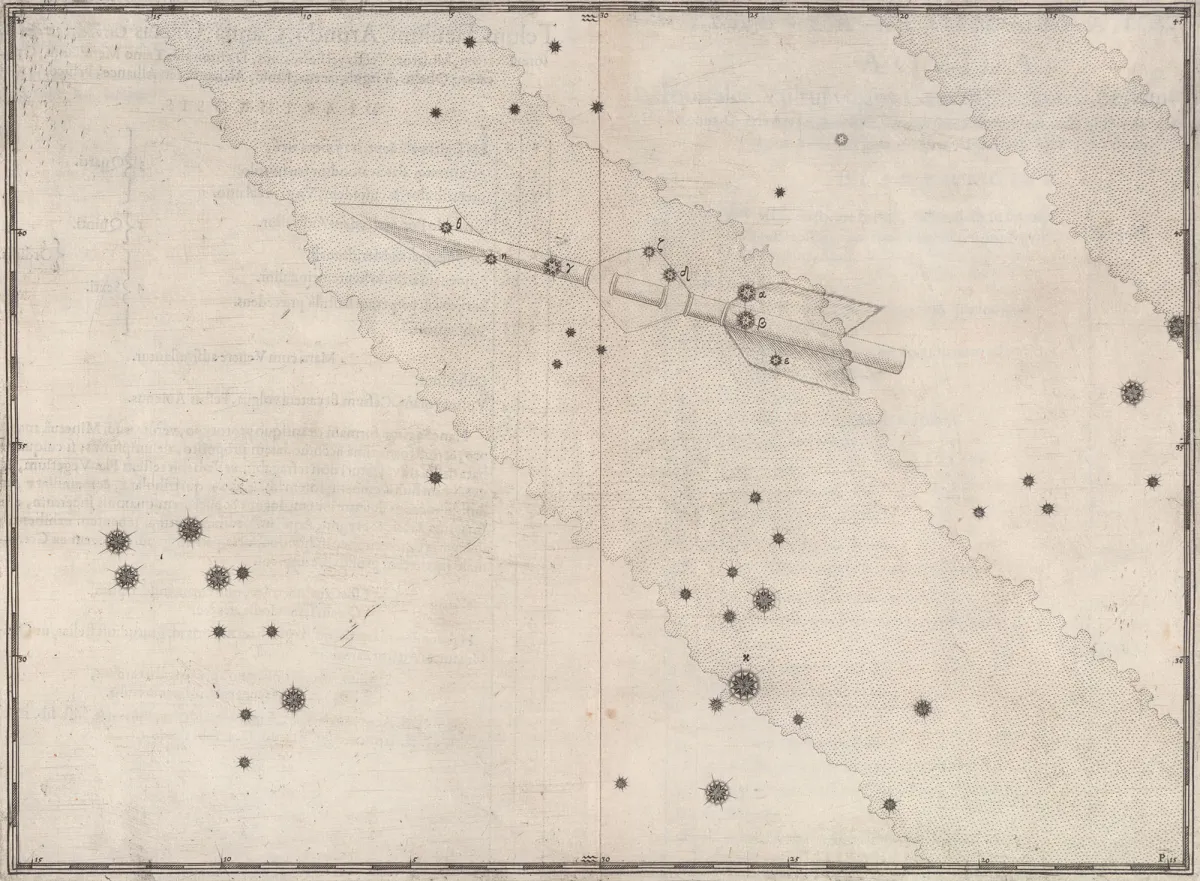Constellation Sagitta (Arrow)

Properties
Sagitta is located in a star-rich region of the Milky Way, north of the star Atair in Aquila. It is a small constellation, but with a distinctive shape reminiscent of an arrow flying from west to east. The constellation, which is 80 square degrees, culminates around midnight on July 17th. [9, 15]
| α Sge | Sham, Alsahm |
| IAU Name | Sagitta |
| IAU Genitive | Sagittae |
| IAU Abbr. | Sge |
| English Name | Arrow |
| Culmination at local midnight | 16 July |
| Season (Latitude +0.0°) | March … December |
| Right Ascension (J2000.0) | 18h 57m 21s … 20h 20m 45s |
| Declination (J2000.0) | +16° 04' 45" … +21° 38' 37" |
| Area | 80 deg2 |
| Neighbours (N↻) | Vul, Her, Aql, Del |
Deep-Sky Object Descriptions
Catalogues

Mythology and History
Sagitta is the arrow with which Heracles hit the eagle who pecked at the liver of Prometheus every day, as punishment for stealing the fire from heaven for the people. According to another representation, the arrow is supposed to be the symbol of cosmic light.
The Greeks called the constellation Tóxon or Oistos, the Romans Latinized it to Sagitta and the Arabs spoke of El Sham . [10, 21]